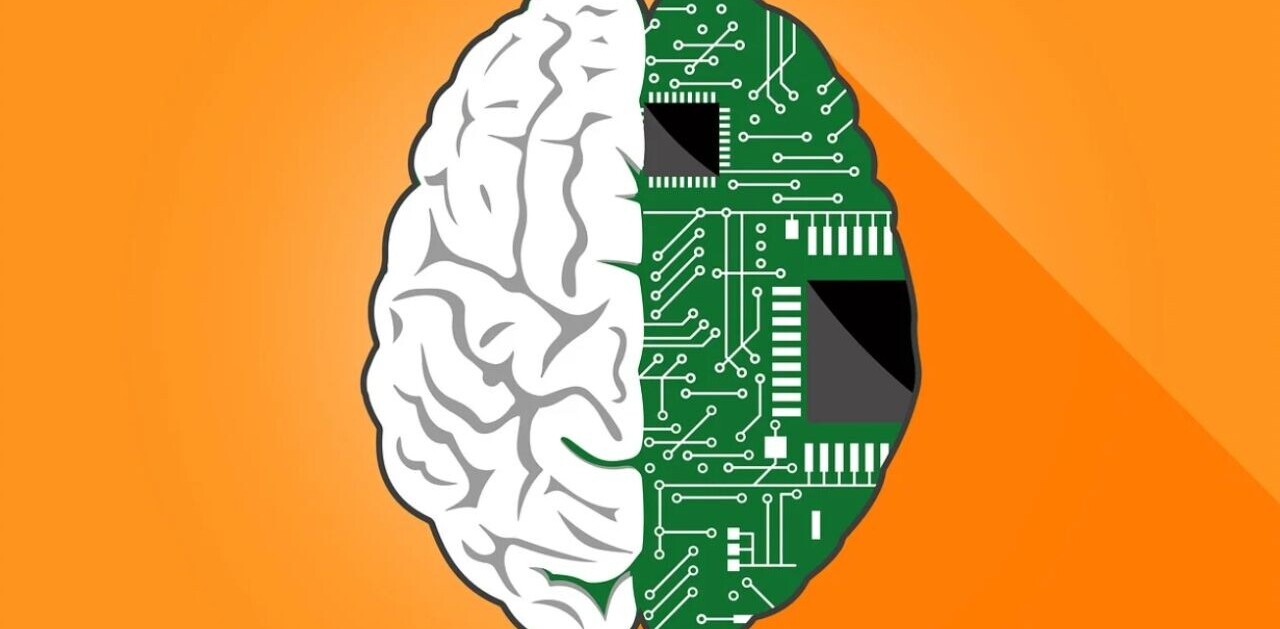
Despite its apparent omnipresence, the internet is only available to around half of the world’s population. Whatever estimate you choose, billions are without the basic internet access we take for granted in more developed countries. This means that, if we are to achieve digital equality, these billions of people will need access.
If you couple this with growing interest in the Internet of Things (IoT), and the tens of billions of devices expected to be connected to the internet in the next few years, then the strain on the world’s energy supply will be vast.
Research has suggested that global internet usage could consume over 20% of the world’s energy by 2030. Any huge expansion in the reach of the internet only works, then, if we can find an almost energy-neutral way of running it.
Enter LiFi
At a Ted talk in 2011, the University of Edinburgh’s Harald Haas gave a presentation on the technology, claiming boldly that the world’s practically infinite supply of LED lights could be harnessed to transmit data as well as provide light.
Not only that, but LiFi can cater for speeds of up to 50MB per second from a standard, off-the-shelf solar cell receiver. A faster, cheaper, more energy-efficient form of wireless internet? The tech community’s interest has been piqued. But has it worked?
Binary District Journal sat down with Mohamed Sufyan Islim, a postdoctoral research associate at the University of Edinburgh’s LiFi R&D Centre.
So, how does LiFi work?
On the electromagnetic spectrum, WiFi utilises a point between radio waves and microwaves. This relatively narrow portion of the spectrum can be time-shared by multiple networks.
LiFi, on the other hand, uses the visible light spectrum to transfer data. Visible light is almost 10,000 times larger than the spectrum occupied by radio waves. Compared with WiFi, it could provide a 100x bandwidth increase.
Essentially, data is encoded in the light emitted from LEDs. It is encoded into subtle changes in brightness that are undetectable to the human eye. This data can be picked up by purpose-built receivers, but Haas and his colleagues have developed a way for ordinary solar panels to act as receivers.
In this sense, the infrastructure for both the transmission and receiving of LiFi-powered data is already in place, tied intimately with the drive for more sustainable power.
The potential extrapolations of the technology are present anywhere LED lights are found – essentially everywhere.
Localized advertising in stores would become more accurate and powerful, anyone in a dense urban environment would (almost always) have access to superfast internet, and cars would be able to communicate using their LED headlights and backlights to avoid accidents.
Places where WiFi has been difficult to achieve – out on the street, onboard an aircraft, etc. – could be serviced by LiFi given the abundance of lights found in most public areas.
These are just a handful of the promising changes LiFi could bring, on top of acting as simply another form of connectivity to bolster existing WiFi and mobile data technologies.
How LiFi is being developed
LiFi has come a long way since Haas introduced it in 2011. In a 2017 presentation by Nikola Serafimovski, VP of Standardisation and Business Development at pureLiFi, the company announced its first working dongle.
The dongle, Nikola says, is the beginning of LiFi becoming a ubiquitous product. The technology works, including the ability for the connectivity to be passed from one light to another, as Nikola demonstrates.
Mohamed Sufyan Islim works under Harald Haas. We discussed the development of the technology and its relationship with existing technologies like WiFi.
LiFi needs a continuous uninterrupted connection to function at full capacity, and moving a mobile device around will inevitably mean breaks in connection.
How, then, can LiFi get around the complicated issue of handover?
“Our smartphones already contain some light detectors such as proximity sensors and cameras. We anticipate seeing a high-speed light detector that can enable LiFi in portable devices in the future,” Mohamed tells BDJ.
“There have been a number of research publications on the effect of movement and handover – maintaining the connection by transferring it to another access point – on the performance of LiFi systems. It can be summarized that the orientation of the mobile device and the mobility of the user may slightly degrade the performance of LiFi.
“However, it is expected that an array of detectors can be used to improve the quality of service and reduce the likelihood of disconnections due to movements or blockage. In fact, there are some commercially available LiFi products that support mobility and handover.
“More interestingly, handover can also be enabled between LiFi and other access technologies such as WiFi. For example, your connectivity would be maintained when moving to an area where LiFi is not available.”
So, how far away are we from a workable LiFi solution?
Nikola’s presentation would suggest that we are close, but the tablet he uses in the demonstration is fitted with “some additional bits and pieces” to receive the signal. We put the question to Mohamed.
“It shouldn’t be long until we see a workable and scalable LiFi model. Two key issues need to be resolved before such a model can be available: standardization and integration,” he says.
“There has been a recent increase in both research and commercial interest in LiFi. A task group has been formed to draft a new standard within the IEEE 802.11 standardization group based on LiFi. The new standard has received the reference IEEE 802.11bb. The integration issue would be dependent on how fast the consumer electronics and device manufacturers would be in considering LiFi as a connectivity solution.”
LiFi is an enabling technology for IoT systems
The solar cells that are used to receive the LiFi data still fulfil their primary purpose of absorbing energy. The light that is used to project the information itself is received by the cell, making the process far less energy-guzzling than WiFi.
In fact, if solar cells become necessary in the broad framework of the internet, then we will undoubtedly see an explosion in their number. This is, internet connections aside, a boon for renewable energy.
One of LiFi’s many potential advantages is a serious reduction in the amount of energy required to power ever-growing data demands. LiFi could help power all manner of connected devices as part of the rapidly developing Internet of Things.
WiFi could, of course, power the connectivity required, but bandwidth demands and associated energy costs would skyrocket.
“Lights can now be connected with IoT sensors to perform active and remote control among other different functionalities,” Mohamed tells BDJ.
“LiFi is an enabling technology for IoT systems. The existing lighting infrastructure can be reused as communication access points. LiFi has the potential to bridge the communications and lighting industries and enable the emergence of light as a service (LaaS).
“The ubiquitous availability of light sources enables the opportunity of creating a dense network of access points, such as users’ density and location, that can enable a wider variety of applications.
“The status lights of the IoT-enabled devices can be used to transmit data, and light detectors can be integrated to enable LiFi. An interesting solution would be to use photovoltaic (PV) cells as light detectors in IoT-enabled devices. This could enable an energy-neutral LiFi transceiver solution for IoT devices with possibly no external power requirements.”
Is LiFi here to replace WiFi?
Well, no. Not at all, in fact. A good way to look at LiFi is as another layer of connectivity on top of mobile data and WiFi.
Ideally, as you make your way around a city, you would be covered largely by LiFi given the abundance of street lights and other light sources. If you put your phone in your pocket or went down a street with no street lights, though, you might expect your connection to cut out.
This is where WiFi or mobile data, depending on what is available, could cover connection. WiFi is already covered by mobile data in the event of a loss of connection – LiFi is expected to operate in much the same way.
“LiFi is not intended to replace WiFi,” Mohamed says. “This is a common misconception. We envisage LiFi as a complementary technology that can seamlessly and simultaneously work with WiFi and other 5G access technologies.
“Here, LiFi can enable additional features such as high-speed access and enhanced security at the physical layer. The wireless optical connectivity enabled by a LiFi access point can never be intercepted by an outsider. In addition, LiFi offers an alternative solution in scenarios where WiFi is restricted such as hospitals and petrochemical plants.”
This is also where the benefits of LiFi are important. The potential increase in speed has already been noted, but LiFi has the added benefit of being more secure by definition.
Unlike radio waves or microwaves, visible light will not pass through walls. Light can be contained in a physical space – doors and blinds can be shut, barriers can be put in place – which makes hacking the network from the outside all but impossible.
There are enough benefits to make LiFi a convincing proposition. Of course, its adoption will be slow and steady – no consumer device is currently fitted with a LiFi receiver, for one thing.
It’s difficult to imagine the major tech companies failing to invest heavily once the technology has sufficiently developed and the public is more aware of its potential.
The world’s existing infrastructure of LED lights means that LiFi could reach places currently left behind by WiFi technology, with the Internet of Things opening up possibilities beyond mobile connectivity.
This article was orginally published on Binary District by Charlie Sammonds. Binary District is an international сollaborative technology community which creates unique competency-based workshops and events on new technologies. Follow them on Twitter.
Get the TNW newsletter
Get the most important tech news in your inbox each week.





